So, if I understand correctly, your data is in chronological order and you have some knowledge about the time-frame in which it was measured.
That given, here's my stab at creating scrambled data and then reparsing it:
library(dplyr)
library(lubridate)
library(zoo) # for na.locf function
# create some scrambled data to work with
df <- tibble(
date_ground_truth = rep(seq(from = ymd('20190801'), to = ymd('20200730'), by = 1), each = 5)
) %>%
mutate(
date_inconsistent_chr = format(date_ground_truth, ifelse(runif(nrow(.), 0, 1) > 0.3, '%Y/%m/%d', '%Y/%d/%m'))
)
# providing here the date range in which your observations lie. I only know that it maxes end of July 2020, so my end result has some remaining unknowns at the start
daterange_known_min <- NA_Date_
daterange_known_max <- ymd('20200730')
# initiate a cleaned df - for any date where we have a day > 12, we know that it can only be one format of YMD/YDM
df_recleaned <- df %>%
mutate(
date_parsed_ymd = as.Date(date_inconsistent_chr, '%Y/%m/%d'), # try YMD
date_parsed_ydm = as.Date(date_inconsistent_chr, '%Y/%d/%m'), # try YDM
date_parsed_deducted = case_when( # write out the clear cut cases
day(date_parsed_ymd) > 12 ~ date_parsed_ymd,
day(date_parsed_ydm) > 12 ~ date_parsed_ydm,
date_parsed_ymd == date_parsed_ydm ~ date_parsed_ymd,
T ~ NA_Date_
)
)
# we will run over the data until we can not deduct any more new dates from what we've learnt so far:
new_guesses_possible <- T
while(new_guesses_possible) {
# how many dates did we already deduct?
num_deducted_dates_before <- df_recleaned %>% filter(!is.na(date_parsed_deducted)) %>% nrow()
# deduct more, based on our knowledge that the dates are chronological and within a certain time-frame
df_recleaned <- df_recleaned %>%
mutate(
earliest_possible_date = coalesce(na.locf(date_parsed_deducted, na.rm = F), daterange_known_min),
last_possible_date = coalesce(na.locf(date_parsed_deducted, fromLast = T, na.rm = F), daterange_known_max),
ymd_guess_in_range = coalesce(date_parsed_ymd >= earliest_possible_date & date_parsed_ymd <= last_possible_date, F),
ydm_guess_in_range = coalesce(date_parsed_ydm >= earliest_possible_date & date_parsed_ydm <= last_possible_date, F),
date_parsed_deducted = case_when(
# keep clear cases
!is.na(date_parsed_deducted) ~ date_parsed_deducted,
# if the ymd-guess falls between the last clear case and next clear case, take ymd
ymd_guess_in_range & !ydm_guess_in_range ~ date_parsed_ymd,
# same approach for ydm
ydm_guess_in_range & !ymd_guess_in_range ~ date_parsed_ydm,
# cover the cases where we don't know either the last or next clear parsed date
# if one of the parsed dates falls before the "first possible date", take the other one.
# (if no daterange_known_min is given, these rows will result in NA and not do anything...)
date_parsed_ymd < daterange_known_min ~ date_parsed_ydm,
date_parsed_ydm < daterange_known_min ~ date_parsed_ymd,
# inversely, if one parsed option falls after the "last possible date", ignore it.
date_parsed_ymd > daterange_known_max ~ date_parsed_ydm,
date_parsed_ydm > daterange_known_max ~ date_parsed_ymd
)
)
# how many dates did we now deduct?
num_deducted_dates_after <- df_recleaned %>% filter(!is.na(date_parsed_deducted)) %>% nrow()
# do we need to go on?
new_guesses_possible <- num_deducted_dates_after > 0 & num_deducted_dates_before != num_deducted_dates_after
}
# kick out all those extra columns :)
df_recleaned_final <- df_recleaned %>%
select(
-date_parsed_ymd, -date_parsed_ydm,
-earliest_possible_date, -last_possible_date,
-ymd_guess_in_range, -ydm_guess_in_range
)
In my example, this fixes all dates after the first week of August 2019.
It might give you different results, if there are longer gaps in your data.
